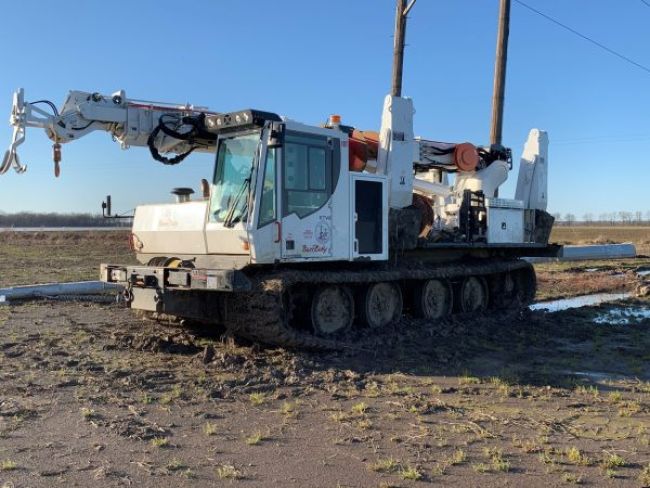
5 Mistakes to Avoid When Spec’ing All-Terrain Utility Vehicles
Watch out for these potentially costly errors.
All-terrain utility vehicles (ATUVs) are machines that utility fleets use to transport people, materials and equipment across potentially hazardous off-road environments for the purpose of inspecting or repairing power lines or performing other tasks in remote areas.
These vehicles go where four-wheel-drive pickups cannot, navigating steep slopes, trudging through heavy brush, hovering over swamplands, and even floating and powering across creeks and rivers, depending on the make and model of the ATUV.
But with a wide range of capabilities and options available, it can be easy to overlook an important spec, one that may cost your fleet a lot of money to correct after the fact. So, what are the most common mistakes utility fleet professionals should avoid when spec’ing ATUVs? Here are five to watch out for.
1. Selecting the Wrong Tool for the Job
ATUVs come in a variety of flavors and list prices. You may be tempted to buy a consumer-grade ATV to go easy on the budget, but that choice could end up costing more in the long run. Some manufacturers, like Polaris, offer commercial-grade units based on their popular consumer models. For extreme terrain, tracked and large-tire vehicles can go beyond where the road turns to swamp or desert.
Some ATVs for commercial use are delivered as bare-bones chassis and require an upfitter to prepare them with bumpers, doors, winches and other necessities. A consumer-grade vehicle likely won’t have the necessary safety features and may not stand up to daily use and abuse. Diesel engines may only be available in commercial lines. Some extreme conditions might call for a sealed-cab unit with an HVAC system, for example, that is unavailable on consumer units.
Ultimately, the use case and terrain should dictate the type of vehicle selected for the job. Depending on the landscape, a commercial-grade ATV or side-by-side will handle most of the tasks thrown at it. However, in some extreme environments, there is no substitute for tracked and large-tired vehicles that carry hefty price tags.
“If you’re digging holes and setting poles across inhospitable territory, a tracked vehicle may be the only tool that can get the job done,” said Scott Merrill, vice president of PowerBully (www.powerbully.com), a division of Kässbohrer Geländefahrzeug AG that specializes in tracked utility vehicles.
Perhaps the best advice is to seek expert input before making what could be a six-figure investment in a piece of equipment.
“The best place to start is talking with a dealer that has both commercial and consumer lines so they can make sure that they fit you in a vehicle that’s good for the application,” said J.C. Kester, founder of Thumper Fab (https://thumperfab.com), an upfitter in Marshall, Texas. “In many cases, the commercial grade is not much more expensive either.”
2. Shortcutting Safety
One of the most significant differences in consumer-grade ATUVs is the lack of rollover or fall-over protection that a commercial unit offers. Some units might provide a basic roll bar and a thin plastic roof that doesn’t meet commercial standards. Upfitters can add steel bumpers, commercial-grade rollover protection systems and half-doors to keep occupants inside the vehicle.
3. Treads vs. Tracks
For an ATUV with tracks or off-road tires, consider whether the vehicle will have to cross or use paved areas. Merrill said that rubber tracks are the best option for occasional road use, but they are more expensive. Steel treads are cheaper but require resources to lay down mats so the tracked vehicle can cross the road without causing damage.
4. Shiny Object Syndrome
Don’t invest in an extreme off-road vehicle just because it’s awesome. Start with the use case first. Understand whether you need an aerial, a derrick or a crane. Then figure out what type of vehicle and chassis can handle the mission. Upfitters must understand the requirements for the center of gravity, hydraulics and electronics as well as the impact on operations and maintenance.
5. Communication Oversight
Telematics are critical for monitoring and managing vehicles in remote locations. Sophisticated systems can identify the point of failure and send an alert regarding what parts may be needed. A repair team can arrive with the right gear to get the vehicle back in service without an extra trip.
“The chassis manufacturer has to be able to communicate with the rig, so if it throws a fault code, we can see it and try to solve it. If we can’t, we know what to tell the mechanic to bring and what parts they’ll need to ensure the shortest amount of downtime possible,” Merrill said.
When time is money, getting a vehicle back in service quickly can pay off. PistenBully, the snow machine sister division of PowerBully, supplies snow-grooming machines for the Olympics and the X Games, so having the right parts and service is critical. The same is true for utilities and contractors renting machines.
“If a machine goes down, the contractor is still paying the rental fee, and then they get really ticked, so we try and get that machine up and running as fast as possible,” Merrill said.
About the Author: Gary L. Wollenhaupt is a Phoenix-based freelance writer who covers the transportation, energy and technology sectors for a variety of publications and companies.
- EUFMC Celebrates 70 Years
- Accelerated Development: What’s New in All-Electric Medium- and Heavy-Duty Trucks
- A Roadmap to Autonomous Trucks
- Sizing Up the Electric Pickup Truck
- 5 Mistakes to Avoid When Spec’ing All-Terrain Utility Vehicles
- Retooling Your Shops for EVs
- New EPA Rules Proposal: How Will You Prepare Your Fleet?
- EUFMC Celebrates 70 Years: Embracing Change and Shaping the Future of Fleet
- Training Users of Aerial Lifts
- Women in Utility Fleet: Julie Gomez

